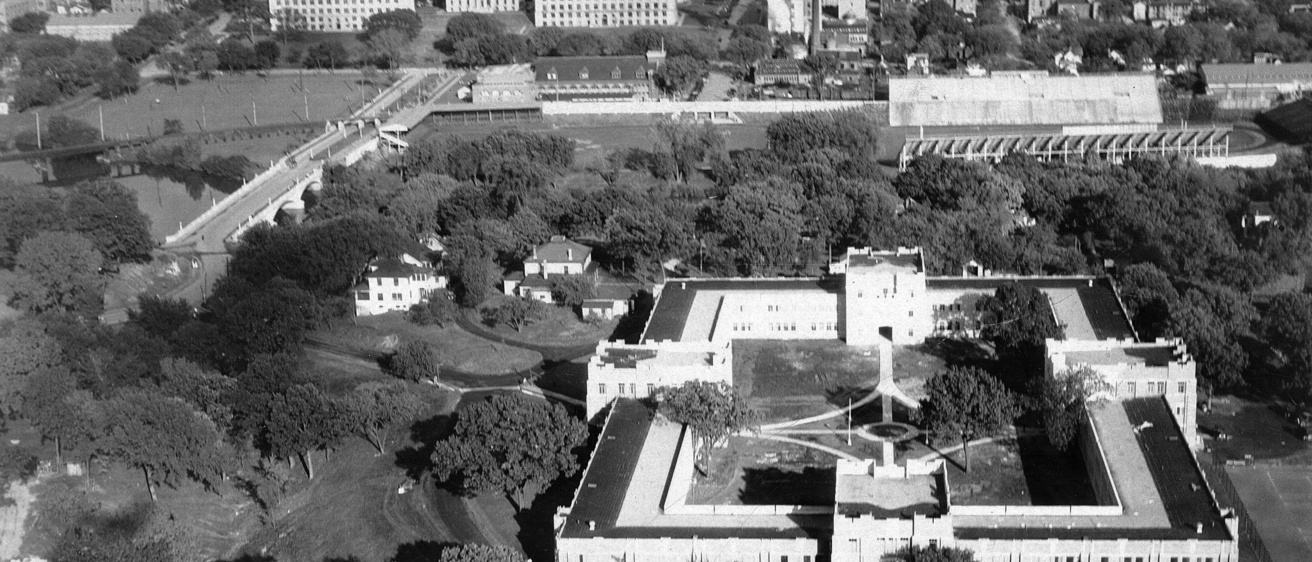By the time construction is complete on the newest University of Iowa residence hall in 2015, it will have been more than a century since the UI opened its first hall: Currier, a dormitory for women, in 1914.
A lot has changed in the past 100 years regarding student housing. A 1918 pamphlet about Currier boasts, “Rooms are lighted by electricity and, with the exception of those on the top floor, are supplied with hot and cold running water.” Breakfast in 1966 was a mere 65 cents, while lunch would set you back 85 cents, and dinner was a buck fifty. Until 1968, men and women lived in separate buildings on opposite sides of the Iowa River.
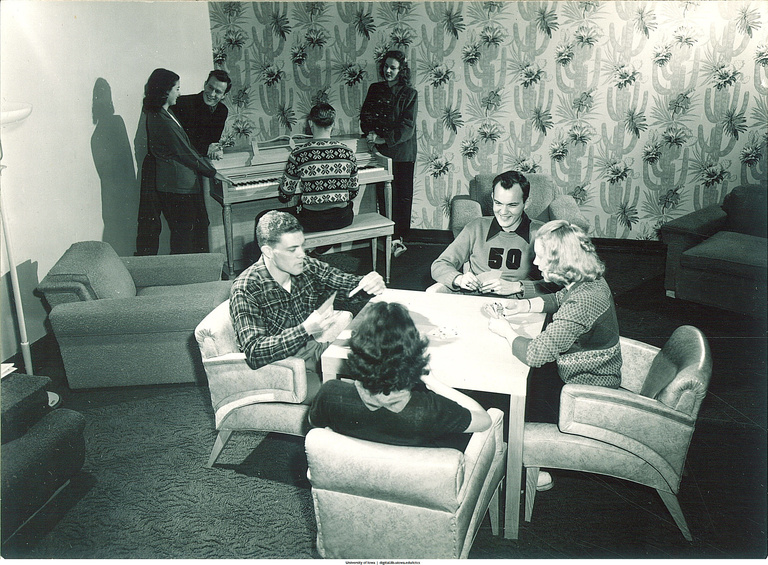
The new hall, currently dubbed West Campus Residence Hall, will be located between Rienow and Hillcrest. It is the first residence hall to be built on campus since Slater opened in 1968. Floor plans call for pods of 26 to 28 students in double rooms—without landlines!—living in communities based on common academic goals and interests.
“When I started in this field some 26 years ago, there was a push to call dormitories ‘residence halls’ instead,” says Kate Fitzgerald, director of academic life and academic initiatives for University Housing and Dining. “The rationale was that dormitories are where students sleep, while residence halls are where they live and grow. It sounds kind of corny, but it’s true. So much learning in college happens outside the classroom. Students are spending more time in the residence halls, and they want the conveniences of home.”
With construction of the new hall under way, Iowa Now decided to learn more about the history of each of the university’s 10 current residence halls. The information below was culled from a variety of documents held in the University Archives, Department of Special Collections, in the Main Library. Photos courtesy of F.W. Kent Collection, University Archives.
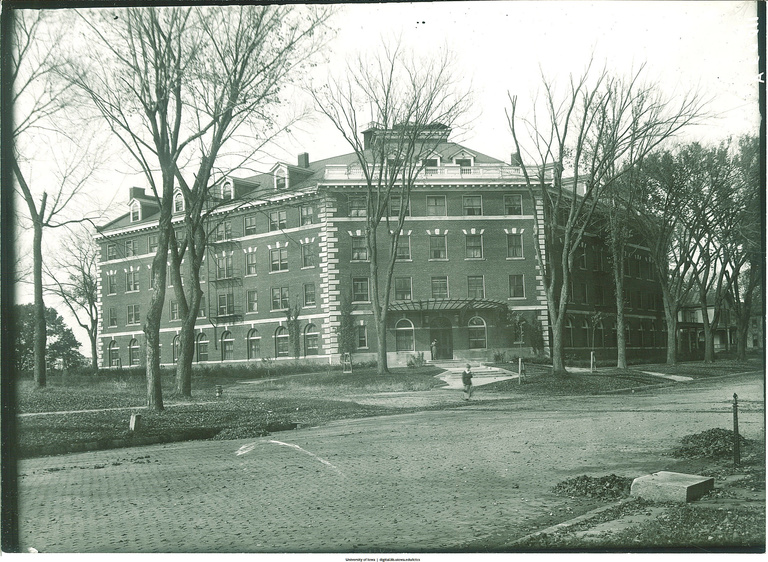
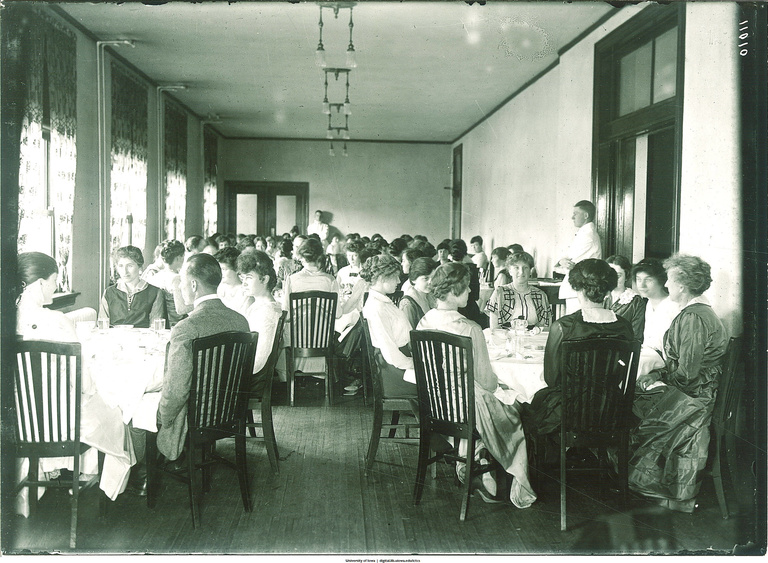
Currier: The commencement of Iowa’s residence-hall system
Currier Hall was constructed on the east side of campus nearly a century ago—at a cost just over $150,000—to accommodate the increasing number of women enrolling at the UI. The original building was just the southeast portion of the current facility, and it was home to about 150 women. Sections were added to the dormitory in 1927, 1939, and 1949. (In 1965, a 10-story addition was planned to the west—that project became Stanley Hall.)
The university’s first residence hall was named for Amos Currier, who served the university as professor, librarian, liberal arts dean, and interim president during his Iowa tenure in the second half of the 19th century. The name also honors his wife, Celia, who taught mathematics and Latin.
Throughout the years, residents enjoyed a beauty parlor, a soda fountain, and formal evening meals (before which they would sing grace). Residents at mid-century recall spring evening serenades from the men, who lived across the Iowa River to the west, and there has long existed an unsubstantiated legend of a triple suicide on the fourth floor by roommates who had discovered they were being wooed by the same man.
Today, Currier is home to 618 residents (it became coed in the 1970s) as well as a fitness center and a baby grand piano.
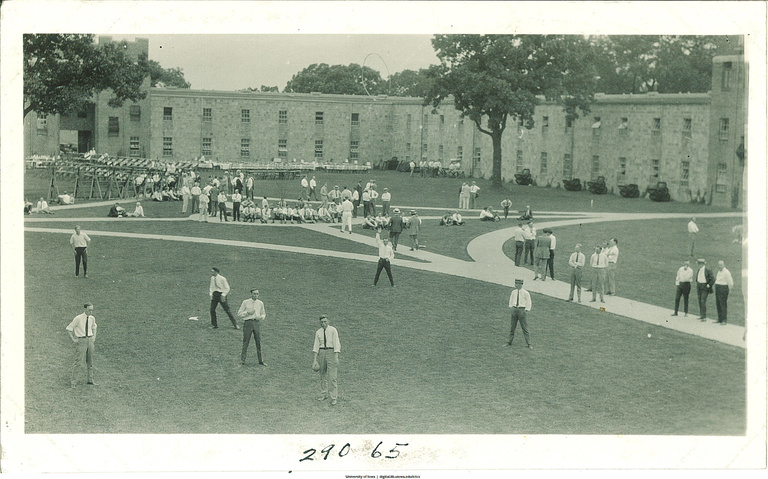
Quadrangle: Iowa's second hall becomes campus social hub
It wasn’t long after Currier was built that the university pursued its first dormitory for men: Quadrangle, which also happened to be one of the first men’s dorms in the Midwest.
Quadrangle, a two-story hall on the west side of campus, originally was built at the request of the U.S. War Department, which asked the UI to construct barracks for the Students Army Training Corps during World War I. The UI opted to build a more permanent structure so that it could be used as a men’s dorm after the war. With an armistice signed in 1918, the UI was able to house 325 men when the building was completed in 1920; an additional 185 rooms were added in 1925.
The building’s name was selected by vote of the residents, and with its proximity to the UI Field House—and the recreation facility’s swimming pool and basketball games—Quad quickly became the heart of student activities. A 1919 pamphlet calls its location “delightful,” and a 1923 alumni publication claims it has one of the best dance floors in Iowa City. It also was home to both a barbershop and a literary society (called the Quadwranglers).
In 1942, Quad was taken over temporarily by the Navy, which rented the facility as a training school for 1,900 aviation cadets (Hillcrest would be used for the same purpose).
The hall enjoyed its own cafeteria from 1956 until 1999, drawing a number of regular faculty and staff diners. It closed when the cafeteria at Hillcrest got a makeover and became the primary dining facility for all the west-side residents.
Women were allowed to live in Quad starting in 1969, but by 1975, the UI decided to raze the northeast corner of the building to save money; that portion needed renovations and had been unoccupied since the late 1960s. The southeast wing of Quad was home to undergraduate advising beginning in 1979 until the Pomerantz Center opened on the east side of campus in 2005.
The building, connected to Rienow by an underground tunnel, now houses 358 residents.
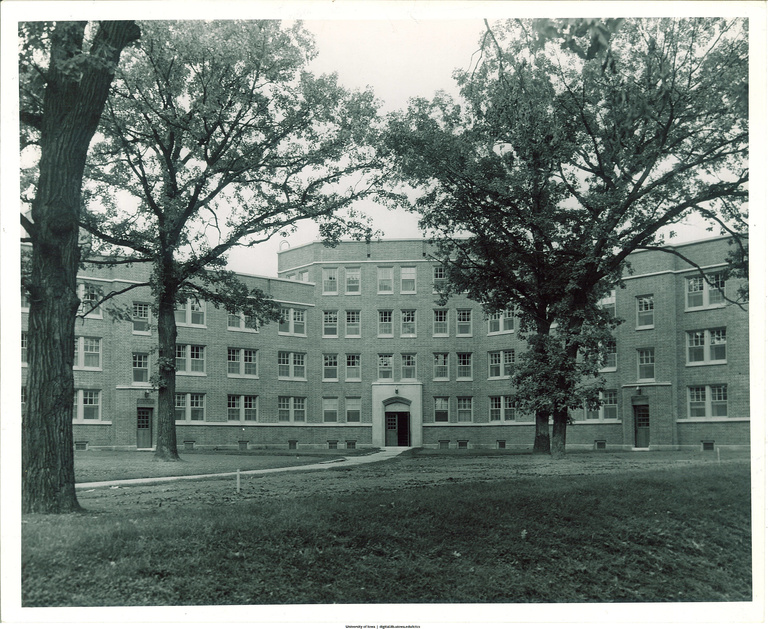
Hillcrest: Commanding views, confounding layout
The north wing of Hillcrest, overlooking the Iowa River from the west, was constructed in 1938-39 as a men’s dormitory. Due to many additions (in 1940, 1951, 1956, and 1961), the hall often is referred to as a labyrinth. In fact, a 1961 handbook advises residents to find their rooms before hauling in their luggage.
Along with Quadrangle, the building was rented by the Navy during World War II to house cadets (when “old gold gave way to Navy blue,” according to one UI publication). In 1945, the hall housed all women to alleviate overcrowding across the river at Currier.
The 1961 addition, which provided five stories of dining, recreation, and storage facilities to the east, was bemoaned by many residents at the time as a “view-killer.” The Hillcrest Market Place dining facility was revamped in 1999 and now serves all residents on the west side.
Rumor has it that the late Russian pianist Alex Slobodyanik stopped by Hillcrest after a performance at Hancher Auditorium in 1990 and played for residents on one of the lounge pianos.
Still the largest of the west-side residence halls, Hillcrest currently is home to 802 residents, both men and women.
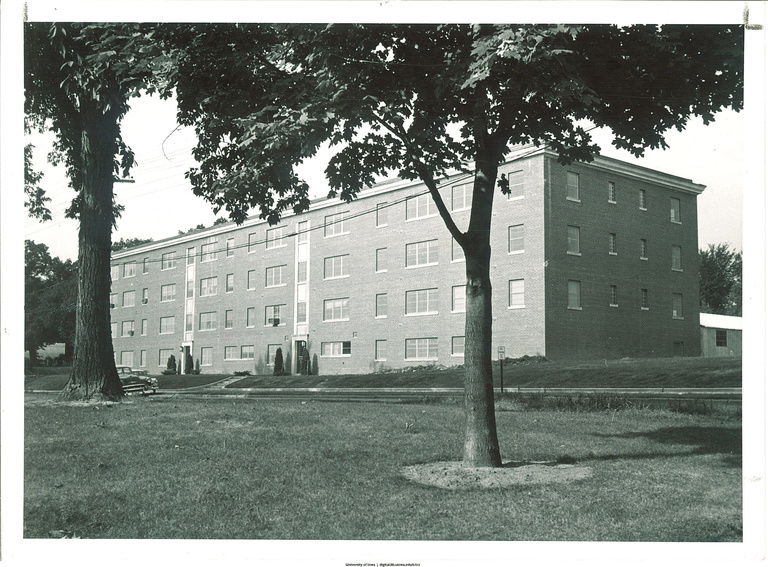
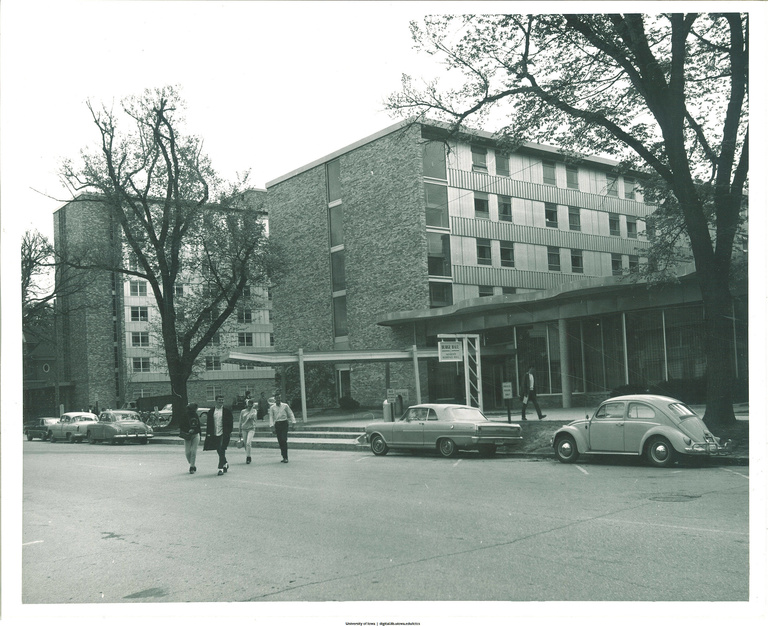
Burge: For years, it was 'the big one'
A few years after Parklawn opened, UI officials turned their attention to a growing shortage of housing for women. In 1958, a $5.5-million, five-story building was constructed just south of Currier.
The hall was named for Adelaide Burge, the sixth (and last) dean of women. She had served as dean from 1920 to 1944, and as dean emerita until her death in 1947. An Iowa City native and graduate of both City High School and the UI, Burge taught high school Latin and English before marrying in 1902. At Iowa, she long advocated for adequate women’s housing.
Burge Hall is perhaps the most legendary of the residence halls, picking up nicknames such as “the Zoo” and “Dirty Burge” over the past 55 years—perhaps due to the sheer number of undergraduates who have called it home each year. When it opened, it housed some 1,289 women—the largest of the halls to date. Each floor was divided into four houses of 75 students, and most rooms were triples. With its basement Carnival Room and soda fountain, Burge was able to accommodate many social activities.
The Burge Market Place dining facility opened in 2005, and a $9 million wing was added in 2009 with four coed floors. Burge now houses 939 residents, both men and women, and is the second largest hall on the east side of campus.
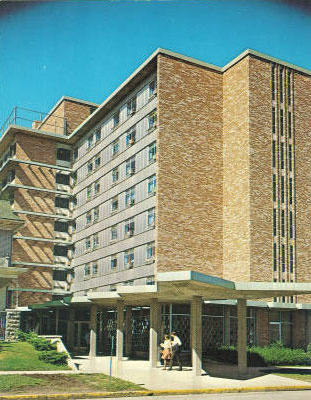
Daum: Revived and now thriving
With enrollment continuing to grow, the UI looked to construct an addition to Burge to the building’s south. Although the $1.77 million addition, which opened in 1964 for women, often was referred to as “baby Burge,” it eventually was named for Kate Daum, director of nutrition at UI Hospitals and Clinics and professor in the College of Medicine from 1926 until her death in 1955.
Ironically, declining enrollment nearly closed the hall in 1991. Looking to save operating costs, UI officials decided to shut it down. An uptick in housing demand (and perhaps some of the loyal and “squeaky” residents) prompted the university to reverse the decision, and the hall remained open.
Today, the entire building is designated as a “quiet house” and is home to 293 coed honors students. Residents enjoy easy access to the adjacent Blank Honors Center and can travel by underground tunnel to Burge for meals.
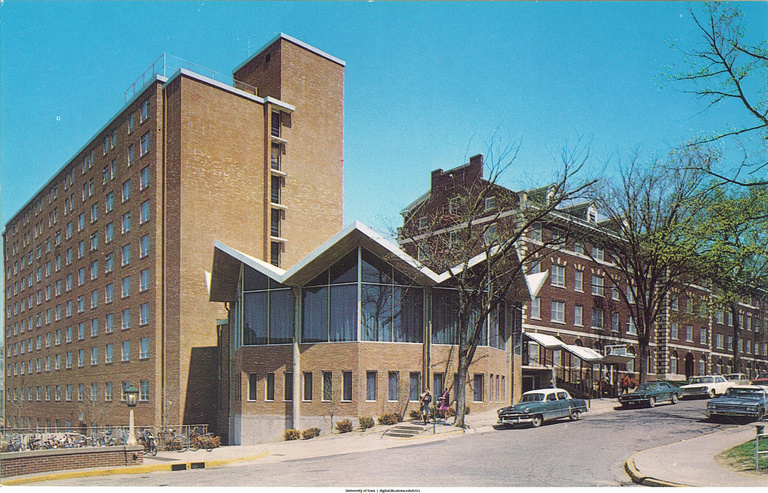
Stanley: Offering sweeping views and silent study
On the heels of Daum came Stanley Hall, a 10-story, $2.5 million facility that opened on a limestone bluff to the west of Currier in 1966. It had been planned as an addition to Currier—it was sometimes called the Currier Hall “annex”—and indeed it is connected to Currier at Currier’s ground and basement levels. The hall’s lounges offer panoramic views of the Iowa River and the north side of Iowa City.
The building’s namesake is Carrie Stanley, who earned UI degrees in 1912 and 1915 and served as professor of English from 1920 until 1954. In 1945, Stanley began directing the Writing Lab (now the UI Writing Center). She died in 1962.
Stanley Hall originally housed 563 women, but became coed in 1991. Today, it is home to 384 residents, and the entire building is designated as a “quiet house.”

Rienow and Slater:
Twin towers dominate
the west side
Two men’s dormitories came online in the 1960s on the west side of the river. The first one was Rienow Hall, a 12-story tower just south of Quadrangle that was constructed in 1966 for about $2 million.
The building was considered an addition to Quad but was named for Robert Rienow, who came to the UI in 1913 as the assistant dean of men and served as dean from 1914 to 1942. He was known for his round-the-clock efforts to help flu victims in 1918 and worked to establish a student health division in 1919 (known today as Student Health Service). A longtime advocate for students, Rienow arranged for accommodations on the third floor of the Field House for those students who couldn’t afford housing during the Depression. He died in 1946.
The hall became coed in 1970 and now houses 477 residents. It is connected to Quad by tunnel.
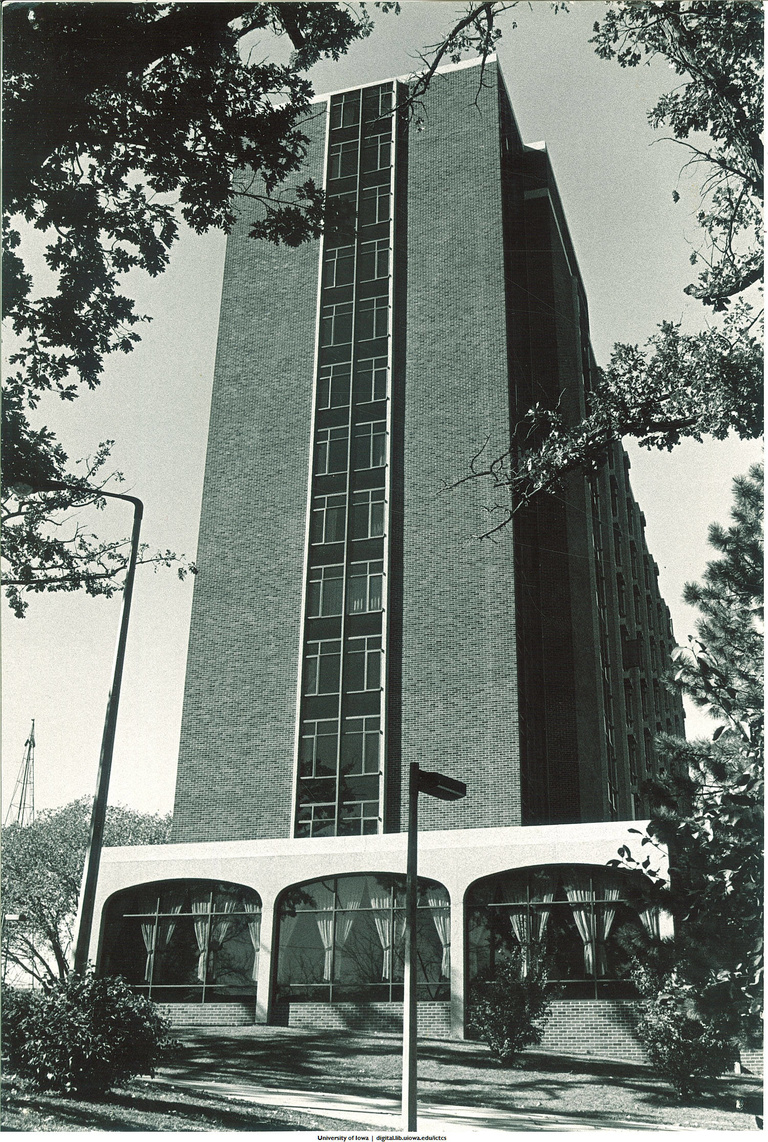
Rienow Hall’s twin to the south is Slater Hall, which opened in 1968 at a cost of $3.9 million. Slater was known as "Rienow II" for several years before it became the first building on campus to be named for an African-American.
Fred “Duke” Slater played Hawkeye football in 1920-21 and was Iowa’s first black All-American in football; he went on to earn a UI law degree and become a federal judge in Chicago. Former UI president Willard “Sandy” Boyd, who has taught at the UI law school since 1954, had suggested that then-Iowa Stadium be named Kinnick-Slater, in honor of the two gridiron greats. When a committee advised against having joint names for UI buildings, Boyd then requested the dorm be named for Slater. Ironically, as an African-American, Slater would not have been allowed to live on campus when he was a student.
Slater Hall is now home to 499 coed residents.
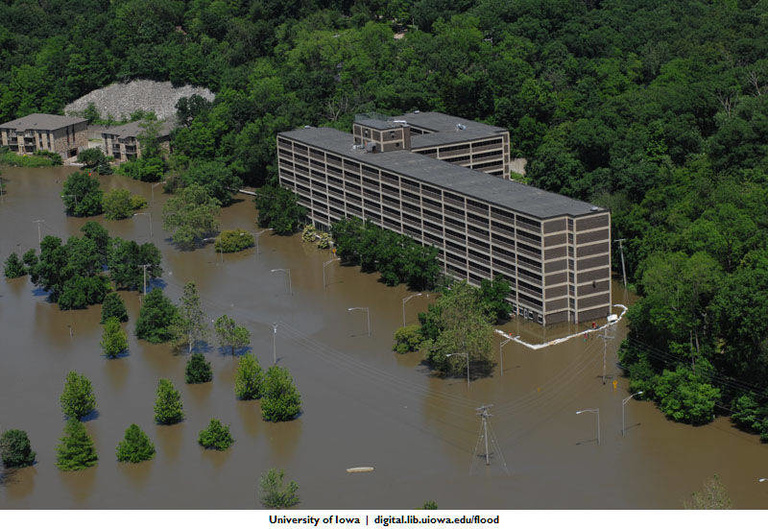
Mayflower: 'Luxury' dorm turned residence hall
Mayflower was the last building to join the university’s residence-hall network. Built in 1966 by a private firm on a site 12 blocks north of the Pentacrest that had housed the Mayflower Restaurant, the eight-story residential building—then called the May Flower Apartment Community—was marketed to students as a “luxury” dorm. Its lower level featured a swimming pool.
The UI leased portions of the building beginning in 1979 to alleviate overcrowding in the residence halls, and purchased it outright in 1982. Despite the distance to campus, the floor plan, with four residents sharing a kitchen and bathroom, was particularly popular with older students. Much to the chagrin of some residents, the pool was closed in 1987 to save money.
The building was forced to close in July 1993 due to the flooding of the Iowa River; residents were relocated to Rienow for the rest of the summer, and the hall reopened in October of that year after suffering $1.2 million in damages. In 1999, the UI spent $1.5 million to renovate Mayflower and appoint it with a game room, a coffee shop, and a multi-purpose room. Floodwaters shut down the building once more in the summer of 2008, and the UI took the opportunity to renovate the first floor and add a recreation room and a classroom.
With 1,009 residents, it is the largest of the UI residence halls.
Other players in the residence-hall system
The residence halls listed above are still used today to house students, but other campus facilities—some still standing and others long gone—also had stints as student housing.
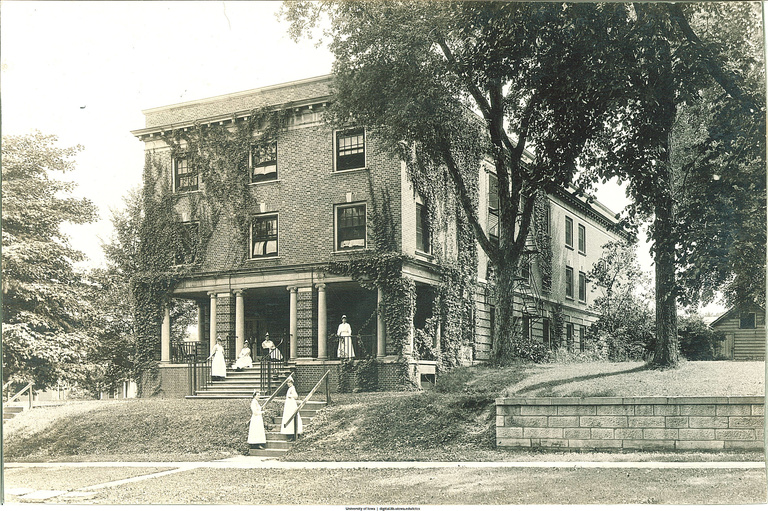
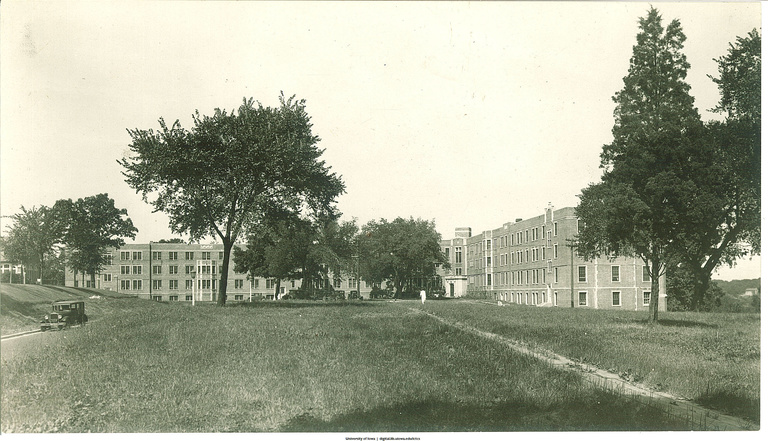
Eastlawn and Westlawn were two brick buildings built, respectively, in 1915 and 1919; both initially were used to house nursing students. Eastlawn was located near downtown, on the southwest corner of Iowa Avenue and Gilbert Street, across from what was then the UI hospital; it ceased being a dormitory in 1948 and then went on to house a number of UI departments (including music, state archaeologist, art studies, payroll) before being demolished in 1999 to make way for a city parking ramp.
Westlawn, which still sits atop a bluff along the Iowa River on the west side of campus, has been used as a temporary, low-cost housing option for the hospital’s nursing personnel and for some students in the health care fields, and also for office space; it is connected via underground tunnel to the UI health campus. Today it houses Student Health Service and University Counseling Service, among other UI offices.
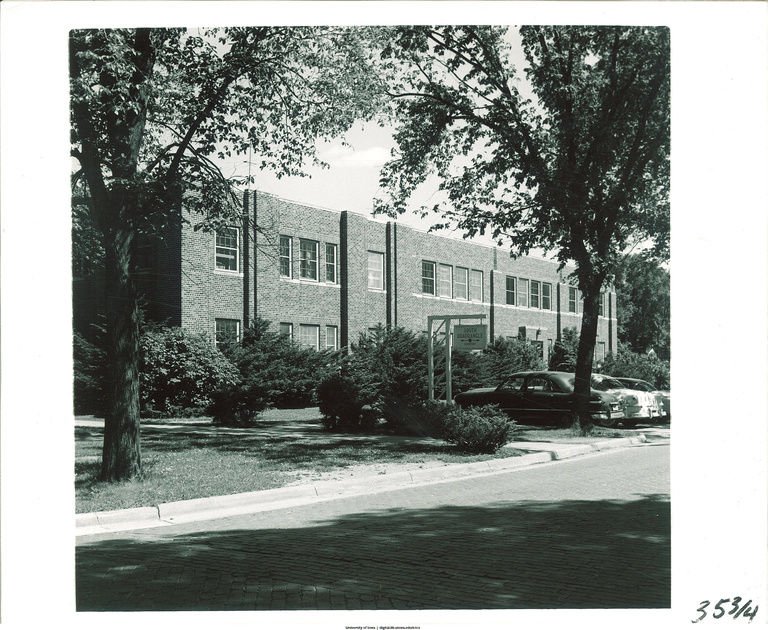
South Quadrangle, an L-shaped, two-story brick building on the west side of campus where a UI observatory once stood, was built by the Navy in 1942 as a pre-flight training facility, and turned over the university after World War II for use as a men’s dormitory. It may have been home to the first UI living-learning community; in the fall of 1967, 130 first-year students participated in a pilot program that housed them in groups based on common academic interests (dentistry, medicine, pharmacy, and engineering). The building now houses the UI Public Policy Center and the Reserve Officers’ Training Corps.
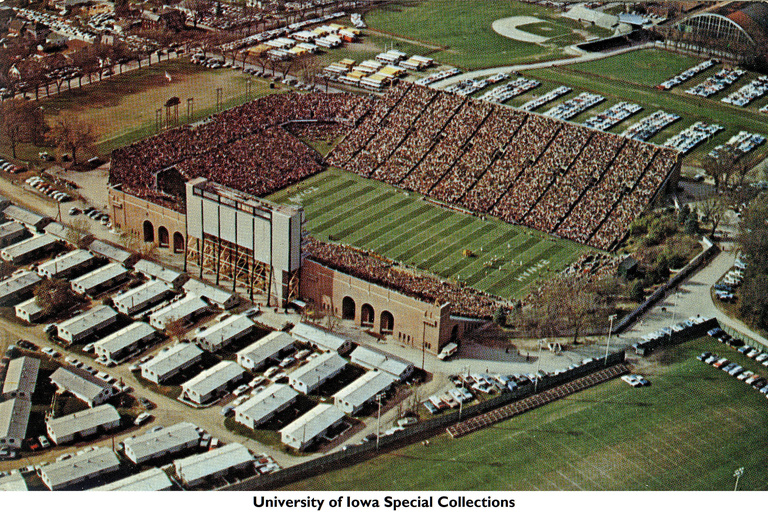
As enrollment swelled in the mid-19th century so, too, did the need for campus housing, and the university did what it could to provide adequate accommodations. There were clusters of temporary barracks and cottages scattered across campus, and the UI also maintained a number of older houses near campus for student rentals. With the influx of first-year students in recent years, the UI has begun leasing space in privately owned apartment complexes, including Centerstone and one building at Hawks Ridge (formerly the Lodge), and continues to explore additional arrangements to provide adequate student housing.
